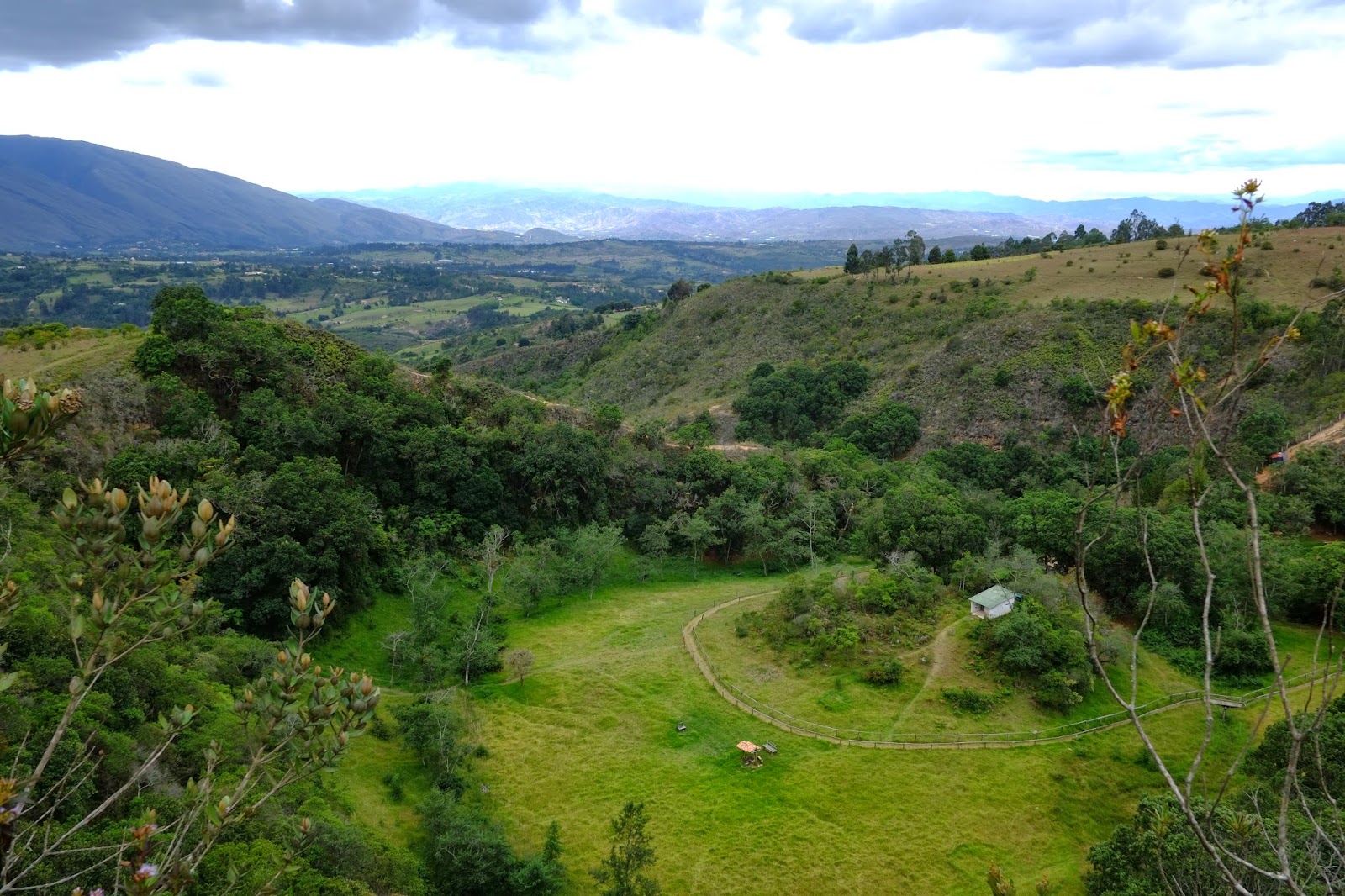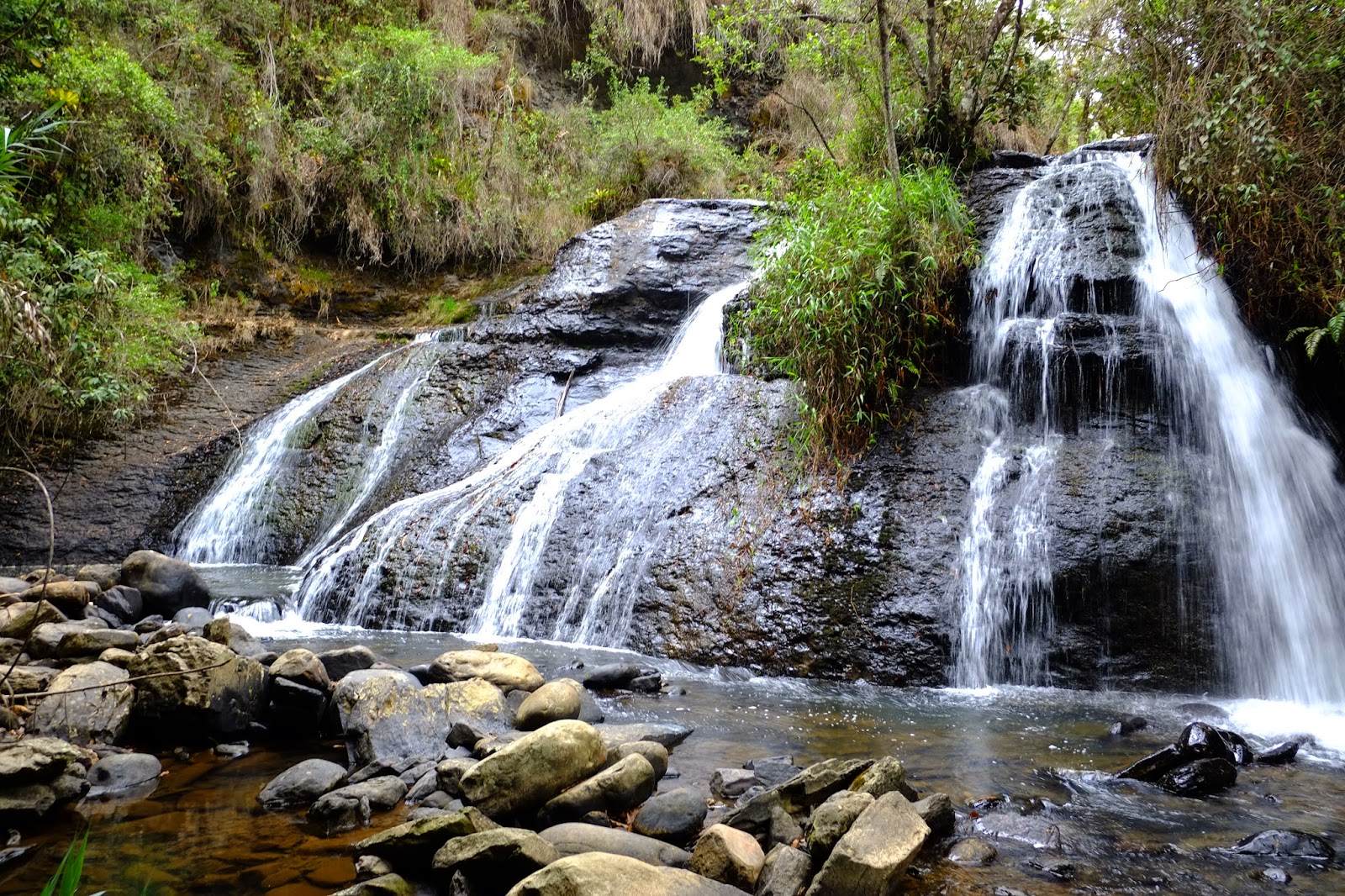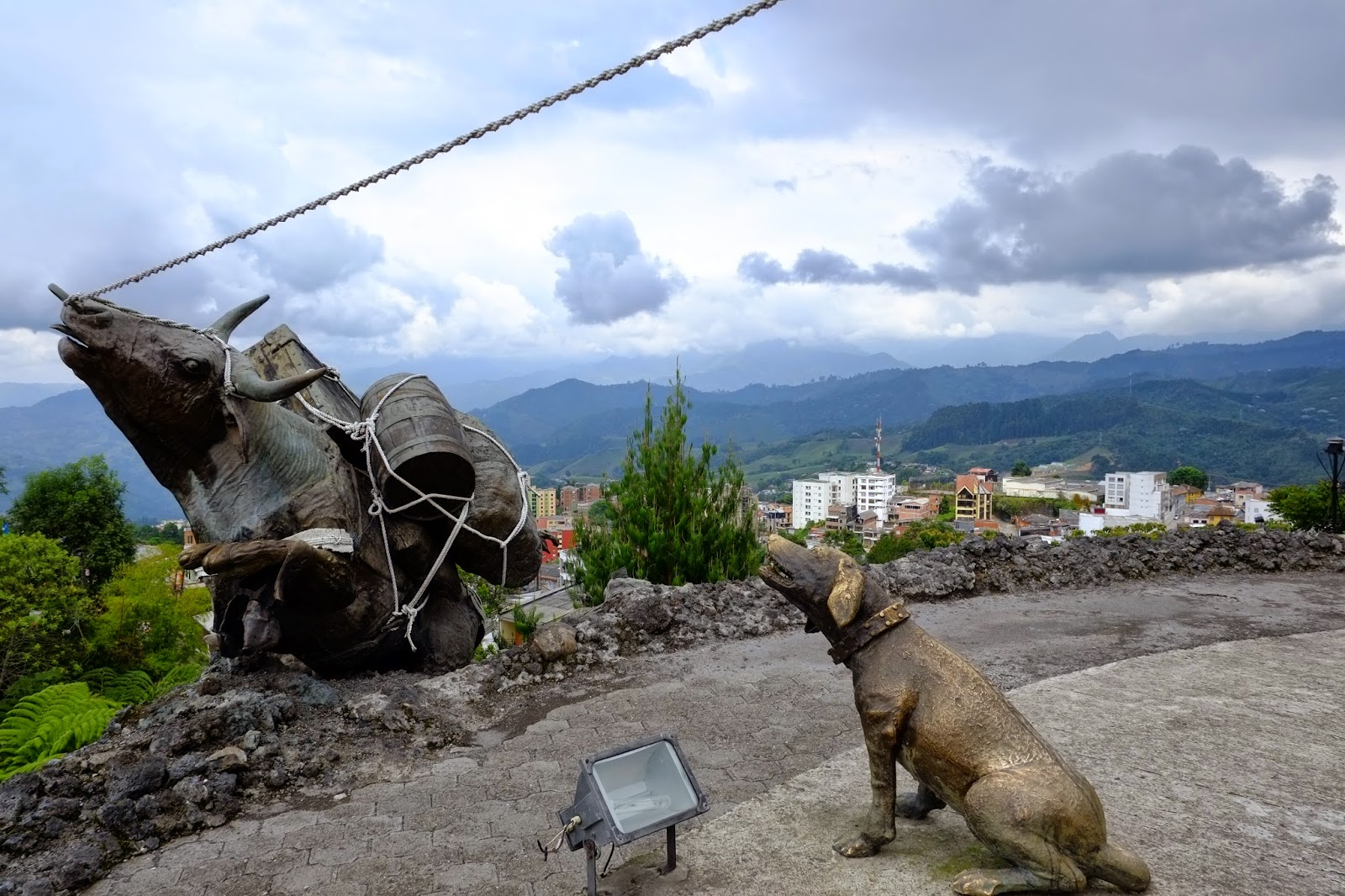One of the days I was in Villa de Leyva we went to some waterfalls, which were a little underwhelming really. And the water was freezing as sin. We tried walking further to find more, but then the track ran out and it started raining.
Majestic hound that followed us around.
The end of the line.
Back in the town, I found feijoas, probably the only event of notice until I left to return to Bogotá.
In Bogotá, I needed to extend my visa, as I'm reasonably sure the following day was the last I had. So I went to the immigration office, where I discovered I needed a few things to do the extension, including a ticket showing you're leaving the country (apparently an un-bought flight reservation print-out can suffice...), which I went to an internet cafe and a travel agent to try and get. Leaving from Bogotá by plane would be cheap, but not convenient at all 3 weeks hence. And the bus companies told me that to buy a bus ticket that leaves from Cali (a city in the south), I'd have to go to Cali to get it. wtf. So I went back to the hostel resigned to paying whatever the fine would be.
I returned on Monday, after managing to find a bus ticket leaving from the correct places, I returned. Then I was told that to pay the fine I couldn't just give them my credit card, I had to sit with some guy as he typed 10 pages of shit into his computer, requiring an appointment for an hour and a half, none of which were available for another week or so. But since I was heading south I could just do it at a quieter office.
So I went to Manizales, which I was planning on doing anyway. The day I arrived there I went to see migration for the third time. I'm pretty sure the guy was trying to get me to not pay the fine, calling his boss and such, and I can only imagine it was coz he didn't wanna do the paperwork. But he couldn't help me, and told me to come back an hour or so after his lunch break, which was due to start, and everything would be ready.
I got lunch, and wandered around that corner of the city a bit:
(read right-to-left, with the traffic I guess): "They moved us off our land, but they won't take our love of life."
Nice and traditional.
That done, the next day I walked through the town centre and up to the highest neighbourhood in the city.
The city's famous for it's cable cars, which I didn't end up riding. But there's a couple bits of old equipment.
City cleaners on break.
Not sure what that thing is.
At the top of the hill is a sculpture called The Colonizers (not entirely sure if that's a word in English. Oh well.)
After Manizales I went to Salento, which I'd heard was beautiful. Turns out it was, but even the drive there was pretty awesome. The whole area around Manizales and Salento and a couple other cities is called the Coffee Zone, and it's where much of Colombia's coffee is grown. The bus ride ended up being about 4 hours of driving past fields of coffee broken by lines of banana/plantain plants and interspersed with big tufts of bamboo.
Yay for local construction materials.
Coffee.
Más café.
Stupid car covering the best bit.
The hostel in Salento was really nice. Far enough out of town to be reasonably isolated, but not too far to walk.
They even had a wee farm.
The next day I went on a tour of a coffee farm, which was pretty interesting. Walk there was nice too:
I believe these gals are about 15 months old. Can't remember when they start fruiting.
Bananas and plantains store water, which can then be used during dry times, as well as providing shade for the coffee.
Dunno what the hell this thing was.
More mature coffee plants. They live til 50, and produce fruit until their end, but after 20 years they produce much less and are replaced. The fruit's collected twice a year, by hand. The workers get paid around NZ$0.22/kilo collected, but can collect up to 80-90kg/day, or around $18/day.
Since there was just me on the tour, the guide showed me their cool little waterfall.
Chopped banana plant with plenty of space for delicious water.
This guy husks the coffee fruits, dropping the raw beans in the tub behind, where they're soaked in water for a couple of days to remove all the gunk they live in.
After soaking, the beans are left in the sun for 8-15 days, depending on the sun. The bad beans are also separated (the dark piles at the back), and are normally sold for Colombian street coffee. I forgot to ask what they do with them at this farm, as they don't sell any of their coffee externally, only to visitors.
Beast coffee grinder.
Stove for roasting the beans.
A different place on the way back to the hostel.
Another day later I went to the Cocora Valley, home to some rather tall palm trees. I believe you can walk from the carpark directly up to the main event, but that seemed like a waste of a day so I walked around a bit of a circuit through the bush.
First stop was the "Hummingbird House."
"What you lookin' at?"
Then we walked up a bit of a hill to come down the palmy valley, with a wee stop at the top.
Then we came to the top of the valley, which was rather otherwordly, really.
After a day spent chillin (hostel didn't have any hammocks though, what a shame), I went with a friend to visit the Desert of Tatacoa, but that's another story.














































































Stunning photos as always...😊
ReplyDelete